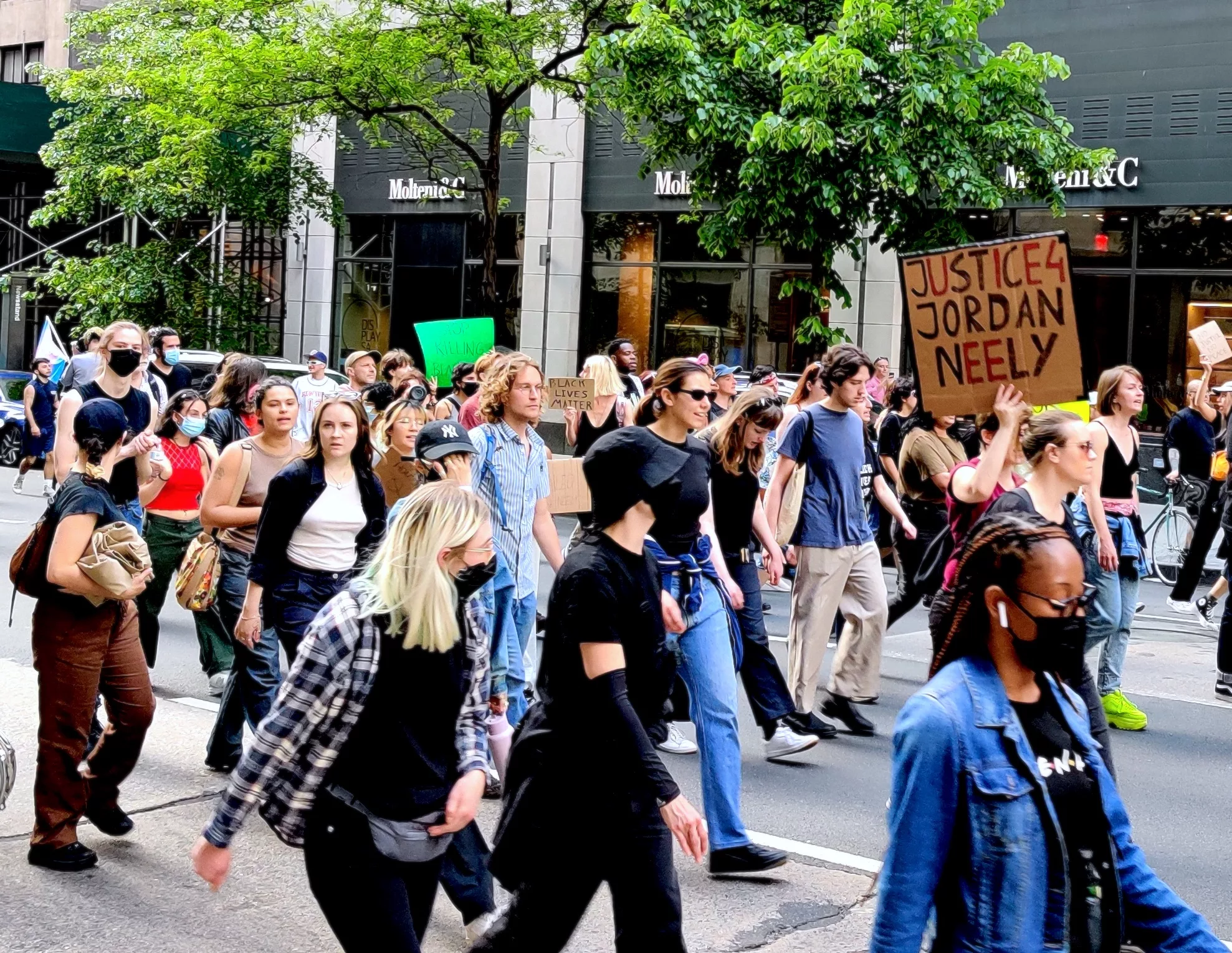‘Justice for Jordan Neely’ Means Investing in Housing, Social Services
Neely’s killing is once again a reminder that carceral approaches to homelessness reproduce, rather than ameliorate, poverty.

Unhoused people are under attack across the U.S. We’ve seen it recently in hideous displays of brutality in San Francisco, Austin, and New York City, where straphanger Daniel Penny earlier this month fatally attacked an unhoused man named Jordan Neely, who appeared to be in crisis on a subway car. These higher-profile outbursts cannot be divorced from the ongoing, concerted political campaign to criminalize homelessness and disappear people living on the streets.
Several states are enacting a wave of laws that criminalize homelessness. In Tennessee, the state legislature passed a law last year which makes it a felony to camp on public property. Missouri passed a similar law, effective January of this year, making it a potential misdemeanor for unhoused people to camp on state-owned land. As of 2021, 17 states had enacted laws that make public camping a crime, and 48 states had laws that make it unlawful—but not necessarily a crime—to sleep, sit or lie in public places. Many of these legal measures may not explicitly mention unhoused people, but the policies are designed to target people without homes by criminalizing routine activities they engage in to survive.
Though carceral policies are growing around the country, these approaches to homelessness do not work.
Many Americans justify their criminalization of homelessness because they believe poor people deserve punishment. The way people speak about those who are homeless is often similar to the way people talk about people who are incarcerated. For those in jail, it’s “don’t do the crime if you can’t deal with the prison abuse.” For shelters, which are often filthy and lack services, it’s “pay your rent if you don’t want to live that way.” But none of these arguments consider the role of systemic racism. They instead rely on the idea that poor people are morally deficient and deserve mistreatment.
All available information suggests that Neely was another victim of a cyclical system that reproduces—rather than ameliorates—poverty. According to the New York Times, Neely survived a traumatic upbringing—including his mother’s murder—but fell into homelessness later in life as he struggled with mental-health issues. Rather than helping him, reports suggest law-enforcement agents preyed on him and arrested him for numerous petty violations.
Sadly, Neely was far from unique in that regard. A 2020 Vera Institute of Justice report found that people without housing are 11 times more likely to be arrested. Those who have been arrested can then struggle to find a place to live, since some landlords will not approve applicants with criminal backgrounds. Consequently, anti-homeless laws are counterproductive: the criminalization of homelessness creates an endless loop where an arrest can prevent one from finding housing—but a lack of housing may lead to arrest.
These carceral approaches also impact poor people who do have homes. In 2010, the NAACP Legal Defense Fund filed a lawsuit against the New York Police Department for its stop-and-frisk practices on public housing grounds. New York City Housing Authority (NYCHA) residents alleged police officers would station near or in public housing developments to stop a higher number of people—mostly Black and brown—to arrest arbitrarily. In perhaps the most high-profile incident, the NYPD in 2014 shot and killed 28-year-old Akai Gurley in a stairwell during a NYCHA-building sweep.
To move forward, we need less interaction between the police and people experiencing homelessness. But cutting this link requires breaking habits that have existed for more than 150 years. Beginning in 1860, the city agency that then handled homelessness—the New York City Department of Public Charities and Correction—was the same agency that imprisoned people. While the head of that department boasted in 1890 about how well-run his agency was, the city split the department five years later due to “severe overcrowding, inadequate funding, terrible living conditions and an ever-rising death rate.” In the years since, the nation has tried few new tactics to “help” the unhoused other than criminalization. After all this time, one lesson should be clear: carceral approaches to homelessness don’t work.
Instead, cities and states should prioritize affordable housing for renting and ownership. Services to prevent homelessness, such as legal aid groups, can only do so much if there aren’t enough housing units where low- and moderate-income New Yorkers can live. Some are confused when housing justice advocates do not support plans to build more homeless shelters. But more shelters do not address the root of the problem: creating more permanent, affordable housing will.
